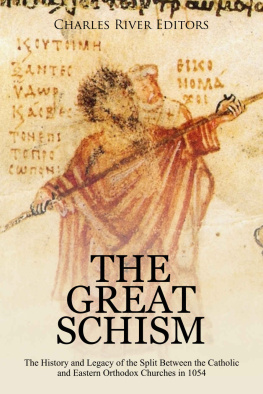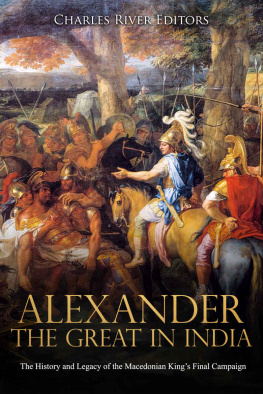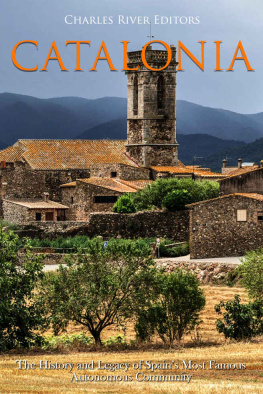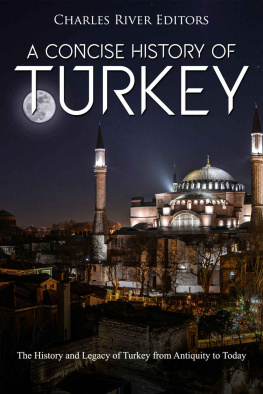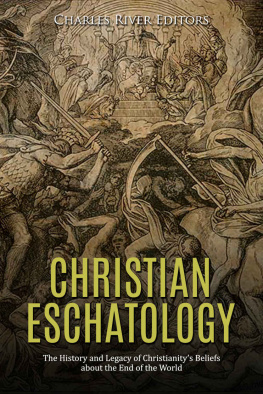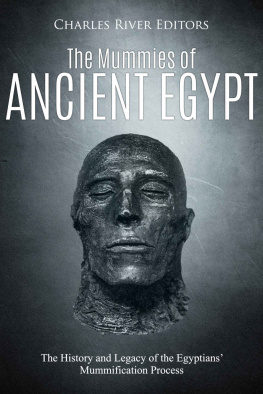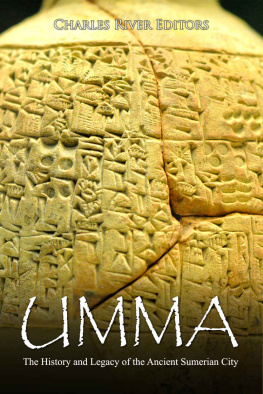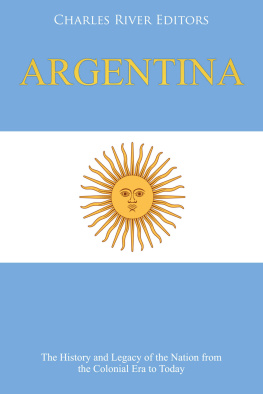Charles River Editors - The Great Schism: The History and Legacy of the Split Between the Catholic and Eastern Orthodox Churches in 1054
Here you can read online Charles River Editors - The Great Schism: The History and Legacy of the Split Between the Catholic and Eastern Orthodox Churches in 1054 full text of the book (entire story) in english for free. Download pdf and epub, get meaning, cover and reviews about this ebook. year: 2020, publisher: Charles River Editors, genre: Religion. Description of the work, (preface) as well as reviews are available. Best literature library LitArk.com created for fans of good reading and offers a wide selection of genres:
Romance novel
Science fiction
Adventure
Detective
Science
History
Home and family
Prose
Art
Politics
Computer
Non-fiction
Religion
Business
Children
Humor
Choose a favorite category and find really read worthwhile books. Enjoy immersion in the world of imagination, feel the emotions of the characters or learn something new for yourself, make an fascinating discovery.
- Book:The Great Schism: The History and Legacy of the Split Between the Catholic and Eastern Orthodox Churches in 1054
- Author:
- Publisher:Charles River Editors
- Genre:
- Year:2020
- Rating:5 / 5
- Favourites:Add to favourites
- Your mark:
- 100
- 1
- 2
- 3
- 4
- 5
The Great Schism: The History and Legacy of the Split Between the Catholic and Eastern Orthodox Churches in 1054: summary, description and annotation
We offer to read an annotation, description, summary or preface (depends on what the author of the book "The Great Schism: The History and Legacy of the Split Between the Catholic and Eastern Orthodox Churches in 1054" wrote himself). If you haven't found the necessary information about the book — write in the comments, we will try to find it.
The Great Schism: The History and Legacy of the Split Between the Catholic and Eastern Orthodox Churches in 1054 — read online for free the complete book (whole text) full work
Below is the text of the book, divided by pages. System saving the place of the last page read, allows you to conveniently read the book "The Great Schism: The History and Legacy of the Split Between the Catholic and Eastern Orthodox Churches in 1054" online for free, without having to search again every time where you left off. Put a bookmark, and you can go to the page where you finished reading at any time.
Font size:
Interval:
Bookmark:
By Charles River Editors
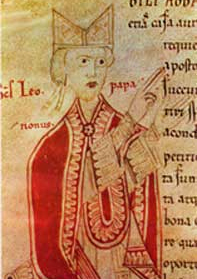
Pope Leo IX

Charles River Editors is a boutique digital publishing company, specializing in bringing history back to life with educational and engaging books on a wide range of topics. Keep up to date with our new and free offerings with this 5 second sign up on our weekly mailing list , and visit Our Kindle Author Page to see other recently published Kindle titles.
We make these books for you and always want to know our readers opinions, so we encourage you to leave reviews and look forward to publishing new and exciting titles each week.
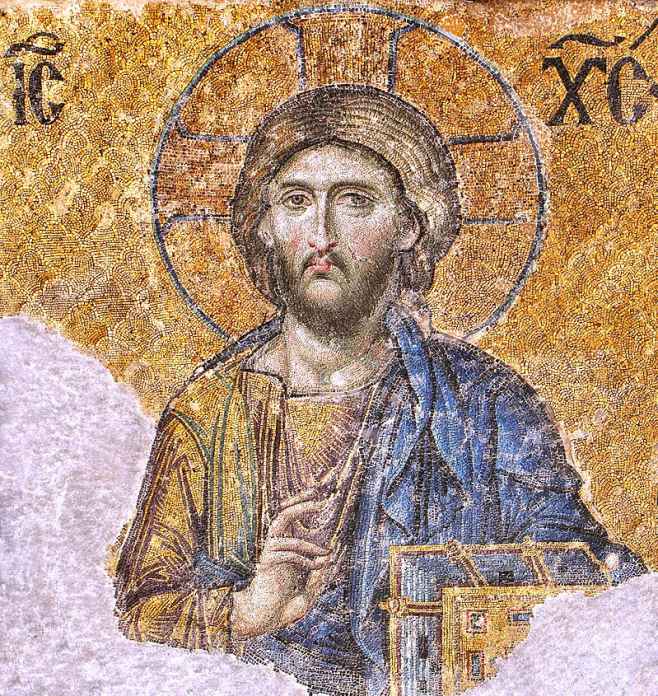
A mosaic of Jesus in the Hagia Sophia
My dearest brother, we do not deny to the Roman Church the primacy amongst the five sister Patriarchates; and we recognize her right to the most honorable seat at an Ecumenical Council. But she has separated herself from us by her own deeds, when through pride she assumed a monarchy which does not belong to her office... How shall we accept decrees from her that have been issued without consulting us and even without our knowledge? If the Roman Pontiff, seated on the lofty throne of his glory, wishes to thunder at us and, so to speak, hurl his mandates at us from on high, and if he wishes to judge us and even to rule us and our Churches, not by taking counsel with us but at his own arbitrary pleasure, what kind of brotherhood, or even what kind of parenthood can this be? We should be the slaves, not the sons, of such a Church, and the Roman See would not be the pious mother of sons but a hard and imperious mistress of slaves. Nicetas, Archbishop of Nicomedia in the 12 th century
For nearly a thousand years following its foundation, there was only one Christian Church. Centered in the city of Rome, the Church expanded and grew until it became the dominant religion in Europe and beyond. The early growth of the Church had been suppressed by the Romans until the Emperor Constantine became the first to convert the empire to Christianity, and from that point forward, the growth of the Church Was inextricably linked with the Roman Empire, the most powerful military, economic, and political force in the ancient world.
For almost 600 years, from the defeat of Carthage in the Second Punic War in 201 BCE to around 395 CE, Rome was one of the most important cities in the world, but things were beginning to change around the time Constantine converted the empire. Rome controlled large areas of the world, but by the 4 th century the emphasis had shifted from military conquest to the control of lucrative trade routes. The problem was that the city of Rome, isolated in the southern half of the Italian peninsula, was far from these routes, and this compelled Constantine to establish a major Roman city on the site of ancient Byzantium. The new city, Constantinople, was located on a strategic site controlling the narrow straits between the Black Sea and the Aegean, meaning it was firmly astride some of the most important trade routes in the ancient world between Europe and Asia and between the Mediterranean and the Black Sea.
Constantinople became the second most important city of the Roman Empire, thriving in parallel with Rome, but then the empire split into Eastern and Western provinces, with Constantinople the capital of the east and Rome the capital of the west. Control of trade routes made Constantinople increase in power and influence while Rome became less important.
In 476, the process was completed when Rome was attacked and sacked by invading Goths, while Constantinople survived the foreign invasions, mainly by paying large bribes to keep the Goths and Huns at bay. Power shifted entirely to Constantinople, and the Latin-speaking Roman Empire evolved into the Greek-speaking Byzantine Empire. Rome, once the most important city in the world, was all but abandoned.
However, not all power and influence shifted east, because one important institution remained firmly linked with the city of Rome: the Bishops of the Church. Under the rule of previous emperors, Christian Bishops had not only been formally recognized, but had been given power within the Roman state. The most important of all was " I Sommi Pontefici Romani the supreme pontiff of Rome. The earliest holders of this title were martyrs and saints of the Church, but by the time of the rise of Constantinople, this role was elected by the other Bishops of the Church. This role would later become known as the Pope (from the Greek word pappas meaning father), but even before that title was adopted, the Supreme Pontiff in Rome was widely recognized as the leader of the Church. In historical terms, these early leaders of the Church are often referred to as popes even though that title was not formally adopted until after the division the Church.
Romes preeminence was not a situation that was welcomed in Constantinople, now the center of the Byzantine Empire and a thriving and wealthy metropolis. After being sacked by outsiders, Rome had become a virtual ghost town, partially ruined and inhabited by a small number of hardy survivors, yet in center of the crumbling city was the Vatican Borgo, the Palace of the Supreme Pontiff and the heart of the Church. In retrospect, it is easy to see that this was a situation that was bound to lead to conflict and disagreement, with the Greek-speaking Eastern Orthodox Church centered in Constantinople and being governed by Latin-speaking popes in a faraway city. Moreover, there had already been theological disputes as far back as Constantines time, which had led to the famous Council of Nicaea in the 4 th century CE.
This situation would lead to growing theological and temporal differences between the two branches of the Church until this finally exploded into a complete breakdown of relations and the splitting of the once unified Christian Church into two different and separate churches. This is the story of that split, the Great Schism of 1054.
The Great Schism: The History and Legacy of the Split Between the Catholic and Eastern Orthodox Churches in 1054 chronicles the events that led to the schism, the key figures that played a hand in the confusion, and how the contentious issues were finally resolved. Along with pictures depicting important people, places, and events, you will learn about the Great Schism like never before.
The growth of Christianity is irrevocably linked with the legacy of the Roman Empire, in particular the reign of Emperor Constantine the Great. Not much is known about the early years of Constantines life, or his upbringing. As the son of a family who at least on his fathers side possessed a significant degree of wealth and social standing, he was presumably educated in the traditional fashion of the Roman aristocracy, with tutors lecturing him in history, philosophy and the sciences. He was likely also taught music, riding, and the arts of war: combat, strategy and tactics.

Font size:
Interval:
Bookmark:
Similar books «The Great Schism: The History and Legacy of the Split Between the Catholic and Eastern Orthodox Churches in 1054»
Look at similar books to The Great Schism: The History and Legacy of the Split Between the Catholic and Eastern Orthodox Churches in 1054. We have selected literature similar in name and meaning in the hope of providing readers with more options to find new, interesting, not yet read works.
Discussion, reviews of the book The Great Schism: The History and Legacy of the Split Between the Catholic and Eastern Orthodox Churches in 1054 and just readers' own opinions. Leave your comments, write what you think about the work, its meaning or the main characters. Specify what exactly you liked and what you didn't like, and why you think so.

